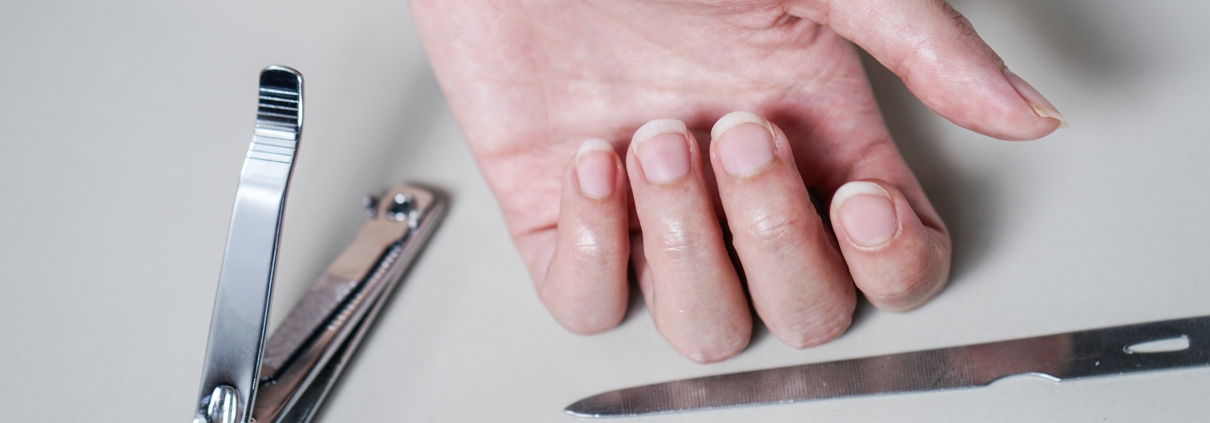The Science Behind Nail Growth
Nails, though seemingly simple, are intricate structures that play an important role in protecting the tips of our fingers and toes. Nail health can be influenced by factors such as genetics, nutrition, and daily habits. Understanding how nails grow and what they need to thrive is key to strengthening them naturally.
The Anatomy of a Nail
To appreciate how nails grow, it’s helpful to understand their structure. Nails are made up of keratin, a tough protein also found in hair and skin. Key parts of the nail include:
Nail Matrix:
The root of the nail located under the cuticle, where new cells are produced.
Nail Plate:
The visible part of the nail that grows outward.
Cuticle:
A protective layer at the base of the nail that prevents infections.
Lunula:
The half-moon shape at the base of the nail, part of the matrix.
Nails grow from the matrix as new keratin cells push older cells outward. On average, fingernails grow about 3 mm per month, while toenails grow more slowly.
Factors Influencing Nail Growth
Several factors determine the rate and strength of nail growth, including:
Age:
Nail growth slows with age.
Diet:
Nutrient deficiencies can weaken nails and reduce growth.
Environment:
Exposure to water, chemicals, or trauma can damage nails.
Health Conditions:
Issues like anemia, thyroid disorders, or fungal infections can affect nail health.
Strengthening Nails Naturally
Here’s how you can improve nail growth and strength using natural methods:
1. Focus on a Nutrient-Rich Diet
Nails thrive when supported by essential nutrients. Key components include:
Biotin: Promotes keratin production, making nails stronger and less brittle. Found in eggs, almonds, and sweet potatoes.
Iron: Prevents ridges and pale nails. Found in spinach, red meat, and beans.
Zinc: Encourages nail repair. Found in pumpkin seeds, chickpeas, and seafood.
Omega-3 Fatty Acids: Keeps nails hydrated. Found in fatty fish like salmon, walnuts, and flaxseeds.
2. Stay Hydrated
Dehydration can make nails dry and brittle. Drink at least 8 glasses of water daily to maintain nail moisture and overall health.
3. Protect Your Nails
Avoid activities that may damage nails, such as:
Using nails as tools to open objects.
Prolonged exposure to water or harsh cleaning agents. Wear gloves during chores.
4. Moisturize Regularly
Apply cuticle oil or hand creams with nourishing ingredients like vitamin E, shea butter, or coconut oil. This helps prevent dryness and cracking.
5. Avoid Harsh Chemicals
Limit the use of nail polishes and removers containing acetone or formaldehyde, as they weaken nails over time. Opt for gentle, non-toxic products.
6. Practice Good Grooming Habits
Trim nails regularly to prevent splitting.
Use a soft nail file to smooth edges.
Avoid aggressive pushing back or cutting of cuticles.
7. Massage Your Nails
Massaging the nails and cuticles increases blood flow to the matrix, promoting faster and healthier growth. Use a moisturizing oil or cream for added benefit.
8. Give Your Nails a Break
Frequent manicures, gel nails, or acrylics can weaken nails. Allow your nails time to breathe between treatments to recover and rebuild strength.
The Role of Patience in Nail Growth
Improving nail health doesn’t happen overnight. As nails grow slowly, it may take weeks to months for changes in diet and habits to show visible results. Consistency is key in following a natural nail-care routine.
Signs of Healthy Nails
Strong nails are smooth, uniform in color, and free of ridges or spots. If you notice persistent discoloration, pitting, or breakage, it could indicate underlying health issues.





